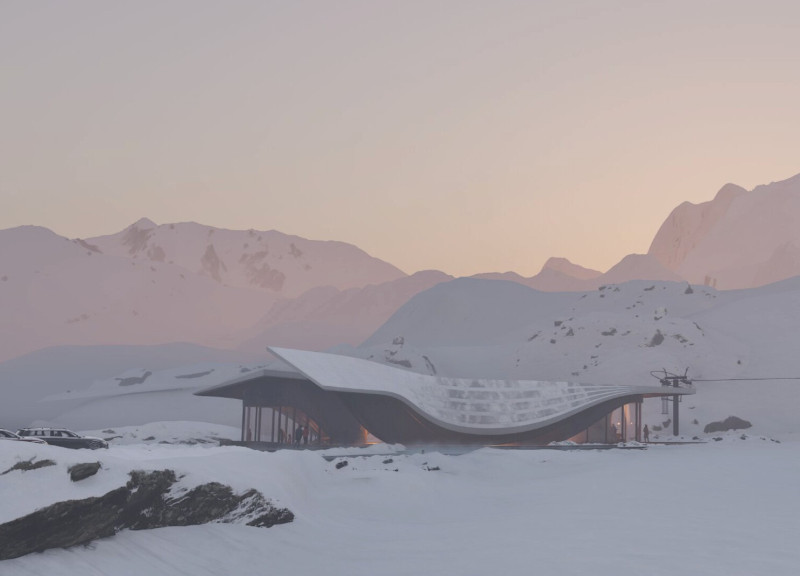5 key facts about this project
At the core of this project is its function, which is primarily to provide a multifunctional space that caters to diverse activities. Whether serving as a social hub, a workspace, or an educational facility, the design prioritizes adaptability, ensuring that it can accommodate a wide range of uses over time. Upon approaching the structure, one immediately notices how the facade engages with the urban landscape. Composed of locally sourced materials, the exterior features a combination of textured concrete and expansive glass panels which not only create visual interest but also establish transparency between the interior and exterior spaces. This interplay of materials reflects a commitment to sustainability and contextual relevance.
Inside, the architectural layout promotes a fluid transition between spaces, enhancing interaction and movement. The open-plan design allows for flexibility, with movable partitions that can be reconfigured to suit various activities or group sizes. Natural light penetrates deeply into the building through strategically placed windows and skylights, which reduces dependency on artificial lighting and fosters a warm, inviting atmosphere. The careful simplicity of the space—accentuated by neutral color palettes and warm textures—creates an environment conducive to collaboration, productivity, and community engagement.
Unique design approaches are evident throughout the project. One notable feature is the integration of green spaces both inside and outside the building. Indoor gardens and terraces not only serve as recreational areas but also contribute to the building’s environmental performance by improving air quality and providing insulation. These green elements demonstrate a commitment to biophilic design principles, emphasizing the connection between people and nature.
Furthermore, the project includes advanced building technology aimed at promoting energy efficiency. Smart systems control lighting, heating, and ventilation, allowing for optimal comfort while minimizing energy consumption. This forward-thinking approach aligns with modern architectural ideas that prioritize sustainability and user experience equally.
In terms of architectural details, attention has been paid to the textures and finishes used throughout the interior spaces. The choice of warm wood accents against the cool concrete provides a sensory contrast that enriches user experience. Every element, from the handrails to the flooring, demonstrates a blend of practicality and visual coherence, reflecting the overall design ethos of the project.
Additionally, the building is positioned to foster community interaction, with public spaces seamlessly connecting to the surrounding urban fabric. Open plazas and gathering areas draw people in, encouraging social engagement and communal activities. This design decision not only enhances the building’s role within the neighborhood but also reinforces the idea that architecture can bring people together.
As you explore the project presentation further, you will find architectural plans, architectural sections, and architectural designs that provide deeper insights into the thoughtful design and meticulous planning behind this project. From the innovative use of materials to the strategic layout of spaces, every detail has been considered to create a place that is not only functional and attractive but also deeply rooted in its context. This project stands as a model of modern architecture, embodying principles that can be applied to future designs aiming to harmonize functionality with environmental consciousness.


 Michael James O'reilly,
Michael James O'reilly, 























